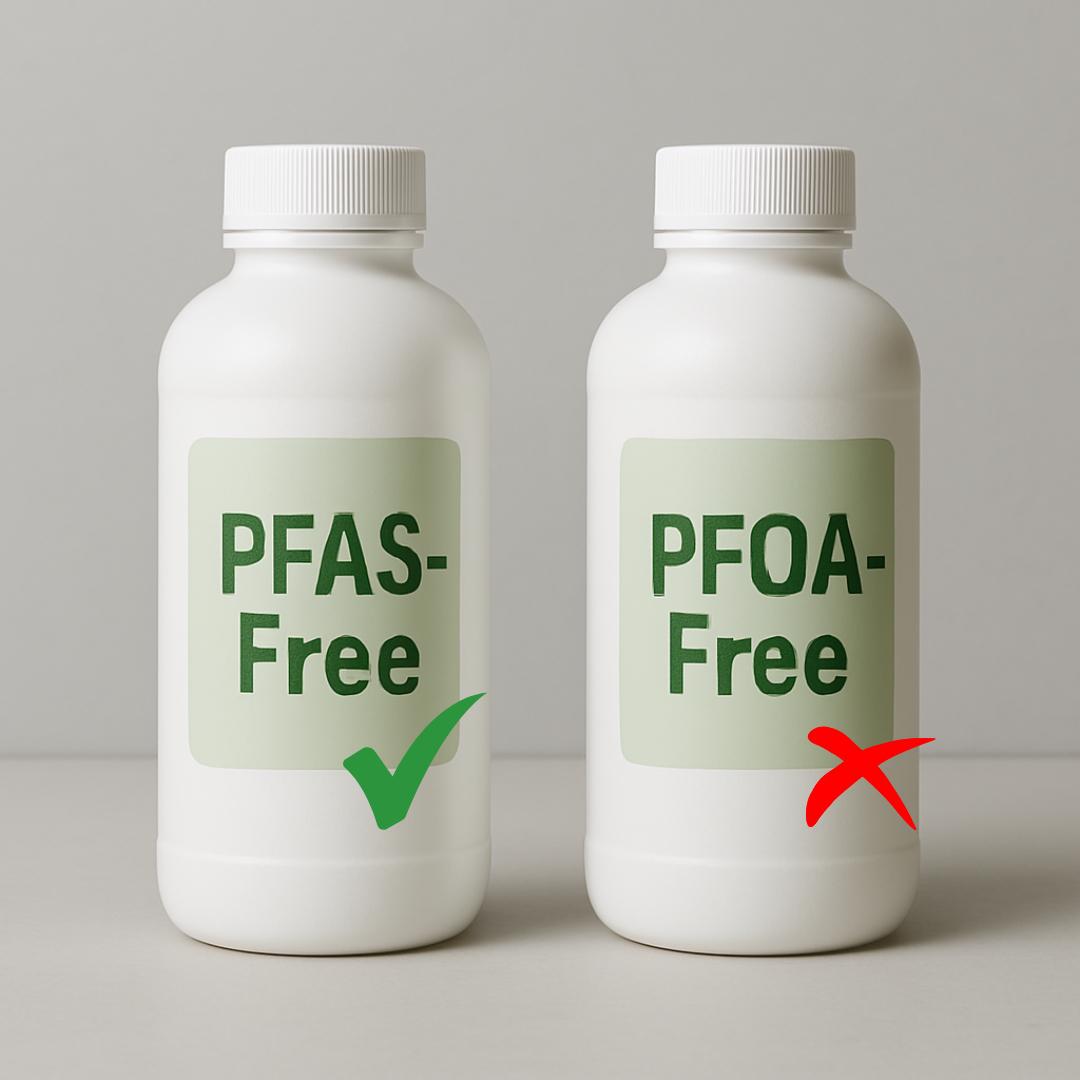If you’ve ever picked up a nonstick pan, stain-resistant sofa, or water-repellent jacket, you’ve probably seen labels proudly declaring "PFOA-free." That sounds reassuring, right? No more toxic chemicals? Unfortunately, it's not that simple.
What is PFOA, and Why Was it Banned?
PFOA (perfluorooctanoic acid) was once a key ingredient in nonstick coatings, like Teflon. Over the years, researchers linked it to some pretty serious health issues—cancer, liver damage, immune dysfunction, and even developmental delays in children. As awareness grew, lawsuits piled up, and eventually, manufacturers phased it out. Sounds like a win, right?
The “Regrettable Substitution” Trick
Not so fast. While PFOA is gone, its cousins—other PFAS chemicals like GenX and PFBS—have stepped in to take its place. These chemicals are part of the same “forever chemical” family, meaning they don’t break down easily and can linger in the environment and your body for years. The worst part? These replacements might be just as harmful, but because they’re newer and less studied, companies can market them as safer alternatives—without really knowing their long-term effects.
Regulatory Loopholes Make It Worse
The problem with chemical regulations is that they’re often reactive rather than proactive. Chemicals like PFOA only get banned after they’ve been linked to serious health concerns. Meanwhile, manufacturers quickly swap them out for similar compounds that haven’t yet been scrutinized. This means we’re stuck in a never-ending cycle of replacing one potentially harmful chemical with another.
Why “PFAS-Free” is the Label You Should Look For
A “PFOA-free” label might make you think you're safe, but it only means one specific chemical is missing—not the entire toxic group. If you want to truly minimize your exposure, look for products labeled “PFAS-free” instead.
What Can You Do?
- Look beyond the label. Don’t fall for the “PFOA-free” marketing trick. If a product doesn’t explicitly say “PFAS-free,” chances are it still contains other harmful chemicals.
- Choose safer alternatives. Opt for stainless steel, cast iron, or ceramic cookware instead of nonstick.
- Filter your water. PFAS chemicals have contaminated water supplies across the U.S. A high-quality filter (activated carbon or reverse osmosis) can help reduce exposure.
- Stay informed. Companies rely on consumer confusion to keep selling potentially harmful products. The more you know, the better choices you can make.
The Bottom Line
“PFOA-free” sounds reassuring, but it doesn’t mean what you think. It’s often just a marketing loophole that allows other harmful PFAS chemicals to take its place. When it comes to protecting yourself and your family, dig deeper, read labels carefully, and look for “PFAS-free” instead.
RESORCES
- Agency for Toxic Substances and Disease Registry (ATSDR) – PFAS and Your Health
https://www.atsdr.cdc.gov/pfas/index.html
Overview of health effects, exposure sources, and government response.
- Environmental Working Group (EWG) – Guide to Avoiding PFAS
https://www.ewg.org/pfaschemicals/
Consumer-friendly tips on identifying and avoiding PFAS in everyday products.
- U.S. Environmental Protection Agency (EPA) – PFOA and PFOS Information
https://www.epa.gov/pfas/pfas-explained
Government facts on PFOA, PFOS, and other PFAS chemicals.
- Green Science Policy Institute – PFAS-Free Products List
https://greensciencepolicy.org/topics/pfas-free-products/
A database of PFAS-free brands and safer product choices.
- Harvard School of Public Health – PFAS and Health
https://www.hsph.harvard.edu/news/hsph-in-the-news/forever-chemicals-pfas/
Public health insights and studies linking PFAS to disease.
- NRDC – The Truth About PFAS Chemicals
https://www.nrdc.org/stories/truth-about-pfas-chemicals
An overview of how PFAS affect health and what can be done legislatively and personally.
- Consumer Reports – How to Shop PFAS-Free
https://www.consumerreports.org/health/toxins/how-to-avoid-pfas-a1060150938/
Product guidance and shopping tips to reduce PFAS exposure.
- European Environment Agency – Emerging Chemical Risks in Consumer Products
https://www.eea.europa.eu/publications/emerging-chemical-risks-in-consumer
Global perspective on “regrettable substitutions” and chemical loopholes.

 Radiant Health And Wellness
Radiant Health And Wellness